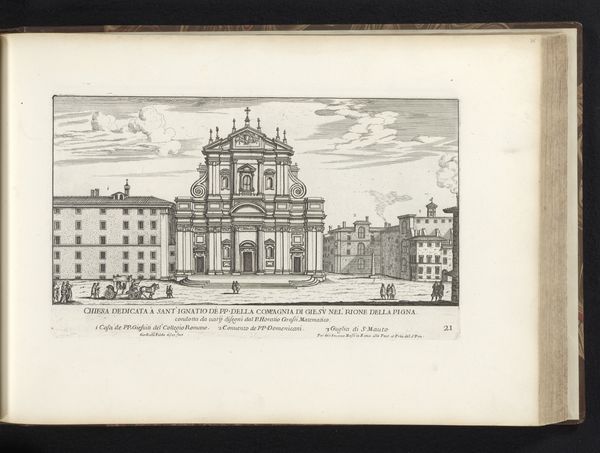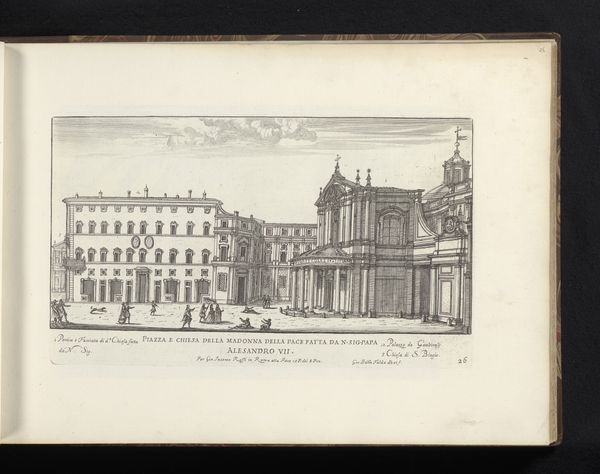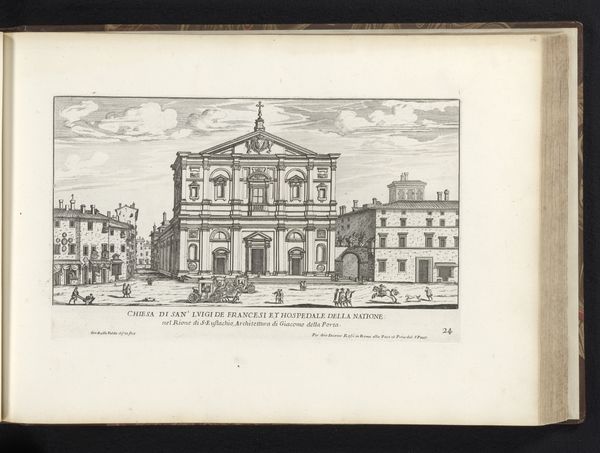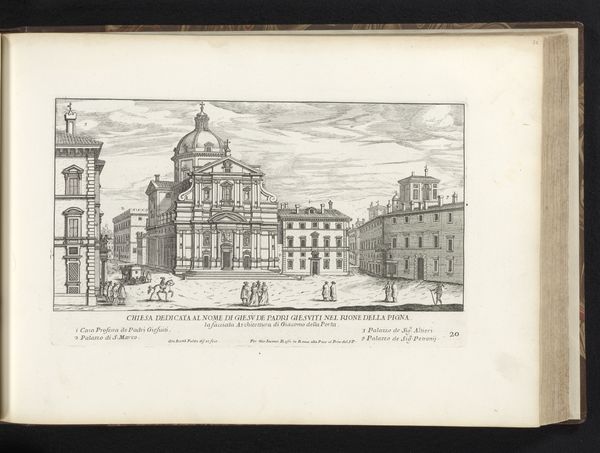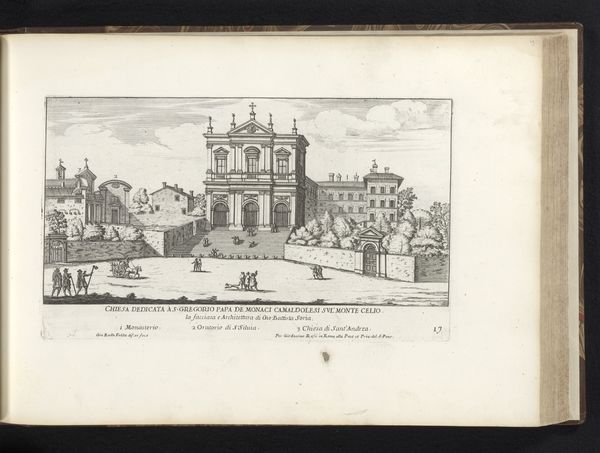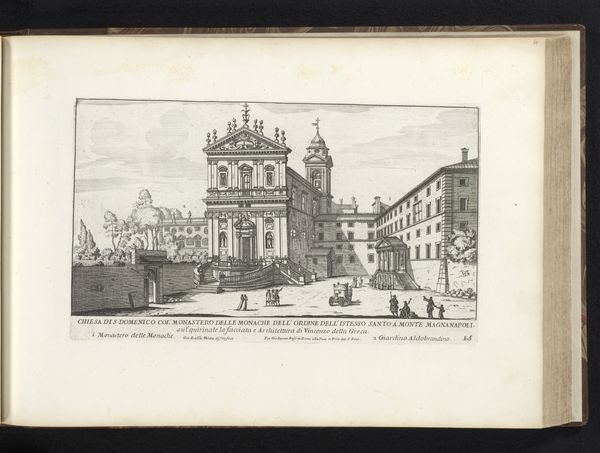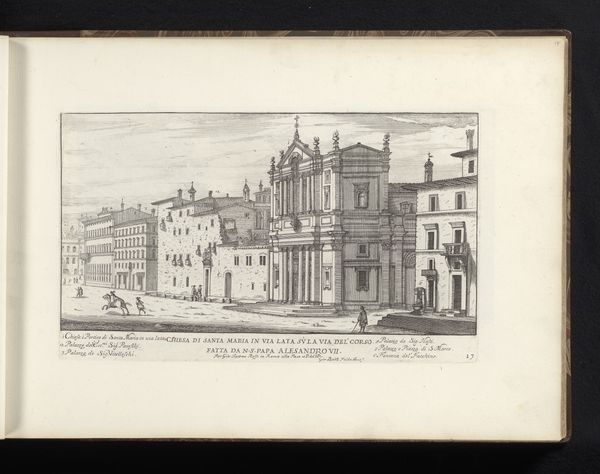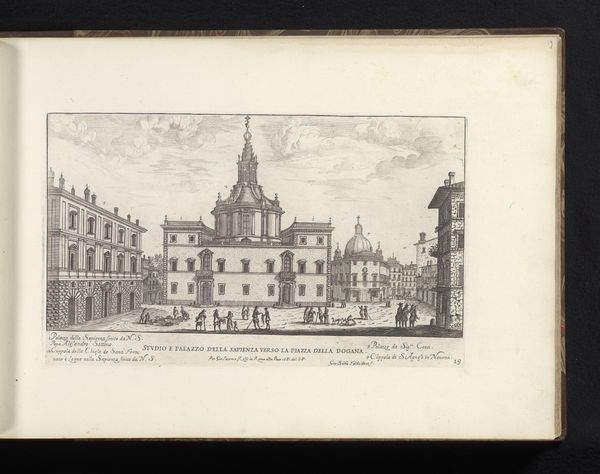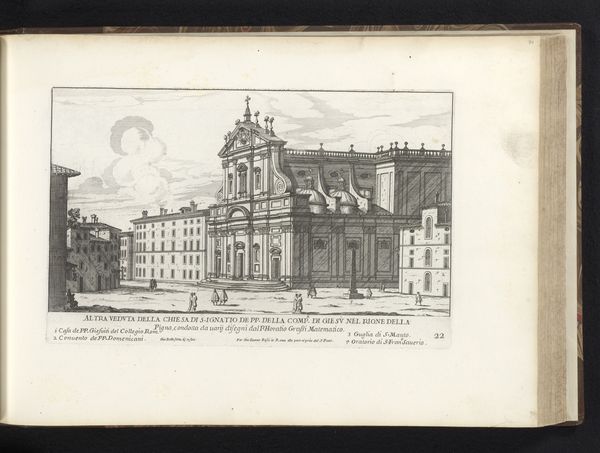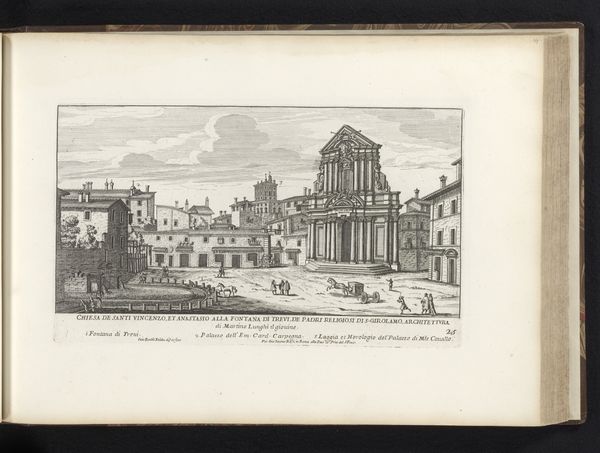
print, engraving, architecture
#
medieval
#
baroque
# print
#
cityscape
#
italian-renaissance
#
engraving
#
architecture
#
realism
Dimensions: height 171 mm, width 286 mm
Copyright: Rijks Museum: Open Domain
Curator: This is "Chiesa Nuova te Rome," an engraving by Giovanni Battista Falda, created around 1665. It's held here at the Rijksmuseum. What strikes you first about this print? Editor: It’s surprisingly serene for such a busy cityscape. The details of the architecture almost overshadow the people in the square; they’re just dark marks, tiny against those grand buildings. Curator: Indeed. Falda captures the newly completed Chiesa Nuova with its associated piazza. Its construction, promoted by Saint Philip Neri, had a significant impact on the urban fabric of Rome. See how he emphasizes its relationship to the urban plan? Editor: Yes, it looks so deliberate, doesn't it? All the tiny figures facing us as though toward a stage, or an altar; the cross topping off both facades is doubled in the eye and creates that effect too. I feel like he uses light and shadow as more than just shading – it highlights their importance! Curator: The placement is crucial. Neri sought to create a vibrant center for both spiritual and community life right in the heart of Rome. Falda here shows the Chiesa Nuova operating not only as a sacred site but also as an anchor for daily life within a changing city. The relatively new baroque style contrasted sharply with medieval or Renaissance predecessors. Editor: The architecture has a calming, balanced weight, it is not too much even for being baroque. To me, it feels grounded by these lines, this technique seems fitting to carry some serious spiritual weight, in addition to the historical and political symbolism that comes through. Curator: Precisely, and consider that printmaking allowed for a broader dissemination of this image. It acted almost as a form of propaganda, showcasing Rome’s architectural achievements and reinforcing the Church’s cultural influence throughout Europe. Editor: So, this seemingly simple depiction becomes a powerful testament to the cultural, spiritual, and political ambitions of 17th-century Rome. Who knew so much could be conveyed in seemingly plain monochrome? Curator: Right! It just shows you that the power of historical art is sometimes found in unlikely forms.
Comments
No comments
Be the first to comment and join the conversation on the ultimate creative platform.
